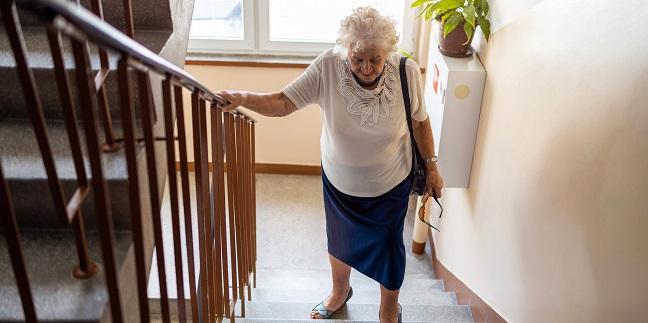Women Treated for Acute HF Report Worse QoL Than Men
Despite QoL gains from hospital admission to 30 days after discharge, female patients’ EQ-5D scores consistently fell short.

Women hospitalized for acute heart failure (HF) report worse quality of life (QoL) than men do, from baseline up through 30 days after discharge, despite both sexes having similar mortality and rehospitalization risks. The findings, from an analysis of the ASCEND-HF trial, suggest that a blanket approach to acute HF isn’t meeting the needs of female patients.
Less is known about sex differences in acute versus chronic stable HF, and women have, as elsewhere in cardiology, been underrepresented in HF clinical trials, the paper’s authors point out. There also is some evidence that patients’ race and gender can affect physicians’ attitudes toward advanced HF care.
Their results showing poorer QoL for women in the context of acute HF thus aren’t surprising, Vanessa Blumer, MD (Duke University Medical Center, Durham, NC), lead author of the new analysis, told TCTMD. What’s more interesting about their study, she said, is that it captures the patient’s perspective.
“So much of heart failure therapy has changed now compared to what it was a decade ago,” Blumer observed, adding, “We know that [these drugs] improve clinical outcomes: we know that patients are hospitalized less, we know that patients die less. But we have no idea how patients actually feel. So I think there’s this new trend of actually trying to include a little bit more of health-related quality of life and patient-reported outcomes within clinical trials.”
Guideline-directed care is known to improve QoL, but these added details make it possible to tease out differences between men and women, she said. “Is there anything we can act on? Are we missing anything? So that they actually do feel better. It’s not only about the quantity of life. It’s also about the quality of life.”
Ersilia M. DeFilippis, MD (Columbia University Irving Medical Center, New York, NY), and Harriette G.C. Van Spall, MD, MPH (McMaster University, Hamilton, Canada), in an editorial, praise the researchers for looking beyond clinical outcomes. The study hints that women may not be receiving optimal care, they note, though undertreatment may not be entirely responsible for the QoL disparity.
The editorialists and the researchers agree the results, published online this week in JACC: Heart Failure, call for targeted treatment for female patients.
Disconnect Between Clinical Outcomes, QoL
ASCEND-HF, a randomized trial testing nesiritide versus placebo on top of standard care, included 7,141 patients hospitalized for HF. Quality of life was assessed at baseline, discharge/10 days (whichever came first), and 30 days using the EuroQOL 5 dimensions (EQ-5D) survey, which measures mobility, self-care, usual activity, pain/discomfort, and anxiety/depression.
Among the patients, 34.2% were women; they tended to be older than men, have higher systolic BP, and have better renal function. Female participants also were more likely to be taking medications for depression. NYHA functional class and congestion symptoms/signs were similar in men and women, apart from nocturnal dyspnea, which was more common in men. Preserved ejection fraction (> 40%) was more prevalent in women than in men (27% vs 13%; P < 0.001).
Among the majority of patients who had reduced ejection fraction (≤ 40%), baseline use of guideline-directed therapies was lower for women compared with men: ACE inhibitors/ARBs (60.0% vs 63.4%), beta-blockers (56.0% vs 61.0%), and implantable cardioverter-defibrillators (17.6% vs 22.9%; P < 0.03 for all).
Men also saw greater reductions in congestion, with a median change in body weight of -3.2% from baseline to discharge/day 10, compared with -2.6% for women. Medan urine volume from baseline to 24 hours was 2,350 mL for men and 2,100 mL for women (P < 0.002 for both).
All-cause mortality and reshospitalization risks were equal for the two sexes, even when adjusted for potential confounders, irrespective of ejection fraction.
In terms of effects on daily living, male and female patients had similar dyspnea relief at 6 and 24 hours. EQ-5D scores rose equally in the two groups, but they remained significantly worse for women at all time points: both for the mapped utility score (capturing the five QoL domains) and the visual analogue scale (VAS; providing a quantitative measurement of overall health status). The lower scores in women held up after adjustment for confounders, and the difference was seen in both low-EF and preserved-EF analyses, although the difference in VAS scores was not statistically significant in the preserved EF group.
Suboptimal Care Not the Only Explanation
The results raise a number of questions, the investigators observe.
“Although multiple prior studies have shown worse health-related quality of life [is] associated with adverse clinical outcomes, the current sex-based data highlight a potential dissociation between patient-reported outcomes and clinical risk,” they write. “Moreover, these findings suggest that although current acute HF management may support comparable clinical outcomes for men and women, important gaps exist in the ability of current care models to improve health-related quality of life among women during and after HF hospitalization.”
It’s also unclear why women were treated differently than men, Blumer et al say. “The degree to which lower rates of medical and device therapy in women are due to therapeutic uncertainty by clinicians, higher rates of medication intolerance, or other factors is unclear.”
DeFilippis and Van Spall note that surrogates for decongestion, like changes in body weight and urine output, may not tell the whole story.
“If decongestion was indeed less optimal in women than men, causes for this are unclear,” they say. “There were no obvious physiological parameters that limited decongestion in women, who had higher systolic blood pressure readings and lower serum creatinine and blood urine nitrogen levels than men at baseline. It is possible that women received less cumulative diuretic dose, that the route of delivery differed, or that they experienced more diuretic resistance than men, although data to corroborate these hypotheses are not available.”
Beyond potentially suboptimal care, the QoL differences could be due to social circumstances and comorbidities, they suggest, citing the higher prevalence of medically treated depression—also detected by the EQ-5D survey—among women. “Mental health is an important factor in a patient’s well-being and self-care. On a practical level, it is often difficult to separate the psychological and physiological burden of HF,” the editorialists note. Another aspect, they say, is that “women with HF are older and may have had less caregiver or spousal support than men.”
Attention to comorbidities and transitional care services could help, they conclude. “Just as we aim to keep our patients alive and out of the hospital after discharge, we also must aim to improve their lived experience every day.”
Going forward, trials should be designed and powered sufficiently to detect sex differences, Blumer urged. “Even though we say [it’s important], we don’t do it enough.”
Caitlin E. Cox is News Editor of TCTMD and Associate Director, Editorial Content at the Cardiovascular Research Foundation. She produces the…
Read Full BioSources
Blumer V, Greene SJ, Wu A, et al. Sex differences in clinical course and patient-reported outcomes among patients hospitalized for heart failure. J_ Am Coll Cardiol HF_. 2021;Epub ahead of print.
DeFilippis EM, Van Spall HGC. Improving health-related quality of life for women with acute heart failure: chronically undertreated. J Am Coll Cardiol HF. 2021;Epub ahead of print.
Disclosures
- Scios Inc provided financial and material support for the ASCEND-HF trial. Database management and statistical analysis was performed by the Duke Clinical Research Institute.
- Blumer, DeFilippis, and Van Spall report no relevant conflicts of interest.





Comments